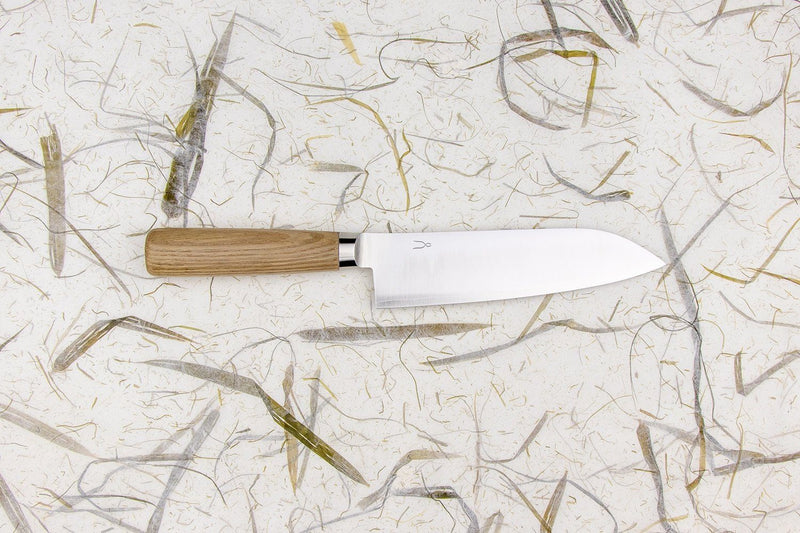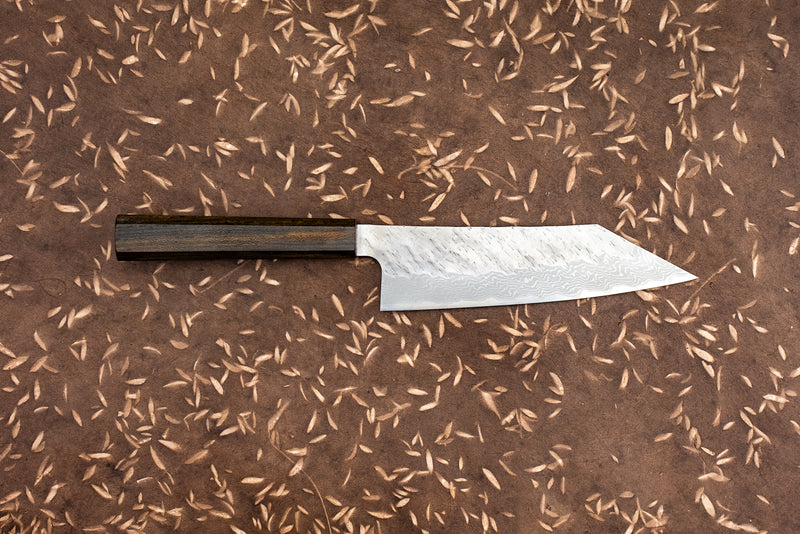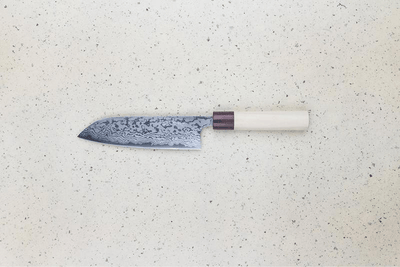
Bunka vs. Santoku: The Featherweight Showdown
Electricity arcs and sparks fly from hammers on hot steel.
Coal fires fill the air with smoke that clings to your clothes and reddens your eyes.
Santokus and bunkas are easily among the most popular knives in the shops, and with good reason—they are approachable, easy to use, and immensely versatile. A santoku can do most anything that its big brother, the gyuto, can do, and a bunka is no different.
Santoku is often described as translating to, “three virtues,” or “three problems solved.” We’ve come to interpret that as, “this knife is perfect for meat, fish, and vegetables.” Makes sense, they can do it all.
Bunka is a Japanese word that means, “culture.” A little harder to put a finger on but not impossible. The word bunka was used a lot in 1950s Japan to describe things with a Western influence like apartments, restaurants, and foods. Bunka bocho loosely means “culture kitchen,” and hints at people becoming a little more open-minded when it came to North American and European foods.
Both knives evolved out of the nakiri, the rectangular cleaver-style blade for veggies, by clipping off the tip to create a more nimble point at some point in the 1940s. Either is generally 160mm to 190mm in length but the defining difference is the shape of the tip — a santoku has a point that curves down from the spine, while a bunka is straighter and more sword-like. Bunkas likely came first as it would be easier to cut a straight line in the 40s and 50s then it would be a smooth curve. A lot of folks feel that the delicate point of a bunka makes it better suited to those ultra-fine tasks like micro-dicing a shallot.
Some makers choose to make a bunka’s profile a little flatter and put a little more of a belly on a santoku—that would make a bunka a little better suited to push-pull chopping while a santoku might prefer some rocking action—in my experience, this is not an overarching theme, but more of a decision left to the blacksmith. Moritaka-san makes a pretty flat santoku compared to Ikeda-san whose Kumo Santoku and Kumo Bunka have nearly the same profile.
Cruising online you might come across other terminology like Hakata, Kiritsuke-style, Kengata or K-Tip santoku. These are essentially the same idea as a bunka but with minor regional differences (ie: hakata-style knives seem to have a bit of a swoopy spine that ends in a taller tip). The important thing to remember is that they are made with the same culinary purposes in mind.
At the end of the day, the winner is going to be the knife that makes you feel like a chopping block champion; some of us are motivated by craftsmanship and stories, others obsess over utility and materials. I’m a real sucker for comfy handles, flashy blades and things from folks I don’t already own—which one are you getting?
Here are a few popular picks










